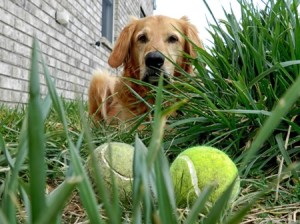A bored dog is an unhappy dog, and he can often come up with lots of his own games to play, many of which you won’t like! Especially when he is young, he may chew up your favorite items, dig, bark, and remain hyper long past when you’re ready to relax.
The dog has a thoughtful brain, and most dogs are curious by nature. They like to investigate, play, hunt, and learn. The more ways you can stimulate your dog’s brain, the more benefits your dog will reap. For example, mental exercise can be very tiring for a dog, so in addition to making him thinking, he can relax and unwind at the same time.

There are many ways you can actively stimulate your dog’s brain. Some of these things can be done by your dog himself and other activities can involve you. Try to match an activity to your dog’s personality and physical abilities. For example, a rigorous and physical activity may not be appropriate for a senior canine citizen. A combination of these activities will help to keep your dog from becoming bored.
Here are some ideas for mental stimulating activities for dogs:
- Training: Training is always a good way to expand your dog’s brain. Dogs enjoy learning, and the sky is the limit. Begin with basic obedience, but don’t limit yourself. You can look into specialized training such as agility, tracking, or even herding, but how about teaching your dog a few new tricks or perhaps he could learn some useful skills such as retrieving dropped items or opening and closing doors? If you’re so inclined, there is even dancing with your dog!
- Games: Dogs love to play games! Games can also enhance your dog’s obedience skills, particularly in the area of Come. Try teaching your dog hide n’ seek. If you have a particularly driven dog, perhaps it could turn into something more hardcore like search and rescue work. You can also play round robin Come games by having multiple people take turns calling him from one to another.
- Encourage him to hunt: Dogs all instinctually are hunters from the smallest to the tallest. Most dogs no longer have a need to hunt for their dinner, but you can still see the hunting instinct alive and well in breeds of dogs like terriers. We can modify this hunting instinct and have the dog still hunt for his dinner. There are two ways to do this. The first is to consider tossing his kibble around a small area. It may be you toss it around a room, hide small amounts around the house, or you toss it around a grassy area. Another thing you can utilize is a variety of food/treat dispenser toys. These toys make him actively move the toys around to receive dinner. Not only do these activities require physical energy, they also are mentally tiring.
- Problem solving: Training involves problem solving, but in this case we’re talking about puzzle type toys. If your dog likes the food dispenser toys, try a food puzzle toy. These toys are more advanced than a food dispenser toy, but they encourage problem solving in your dog. You can also do something similar utilizing boxes or containers and hiding food within just one of them. Your dog will have to use his nose to locate where the food is hidden. There is even a sport called Noseworks that is based upon this. If he has enjoyed your games of hide n’ seek, try hiding his toys for him to locate or even consider partially burying toys or treats in a digging location such as a sand box for him to uncover.
- Rigorous exercise: This is more than just a walk around the block, although any walk is a fun activity for a dog. Instead, consider trail walks, hiking, or vigorous games of fetch. Try ball launcher toys to get a good distance on your throw. Does your dog love to chase movement? Try playing with a flirt pole toy for him to chase.
- Consider activities like therapy work: For the right kind of dog, therapy work is very mentally stimulating and enjoyable. Your dog needs to really be a people dog who loves to be pet by anyone he meets. He also will need to be well behaved (passing of the AKC Canine Good Citizen test is a good starting point), unflappable and not worried in new situations, and controlled around other dogs. But, if he likes therapy work, he’ll have an endless amount of opportunities to help a lot of people feel better.
There are many more activities that can be stimulating for your dog, and the sky is the limit for an eager dog and handler. This list is only a starting point to give you potential ideas to work with. Make sure to tailor the activities to your dog. Also, be sure to start out easy so that he doesn’t become frustrated. For example, when playing hide n’seek, run and hide somewhere easy that he can see you go to and quickly find you at. Then, as he catches on, increase the difficulty. Before you know it, he’ll be a master at whatever you choose!
